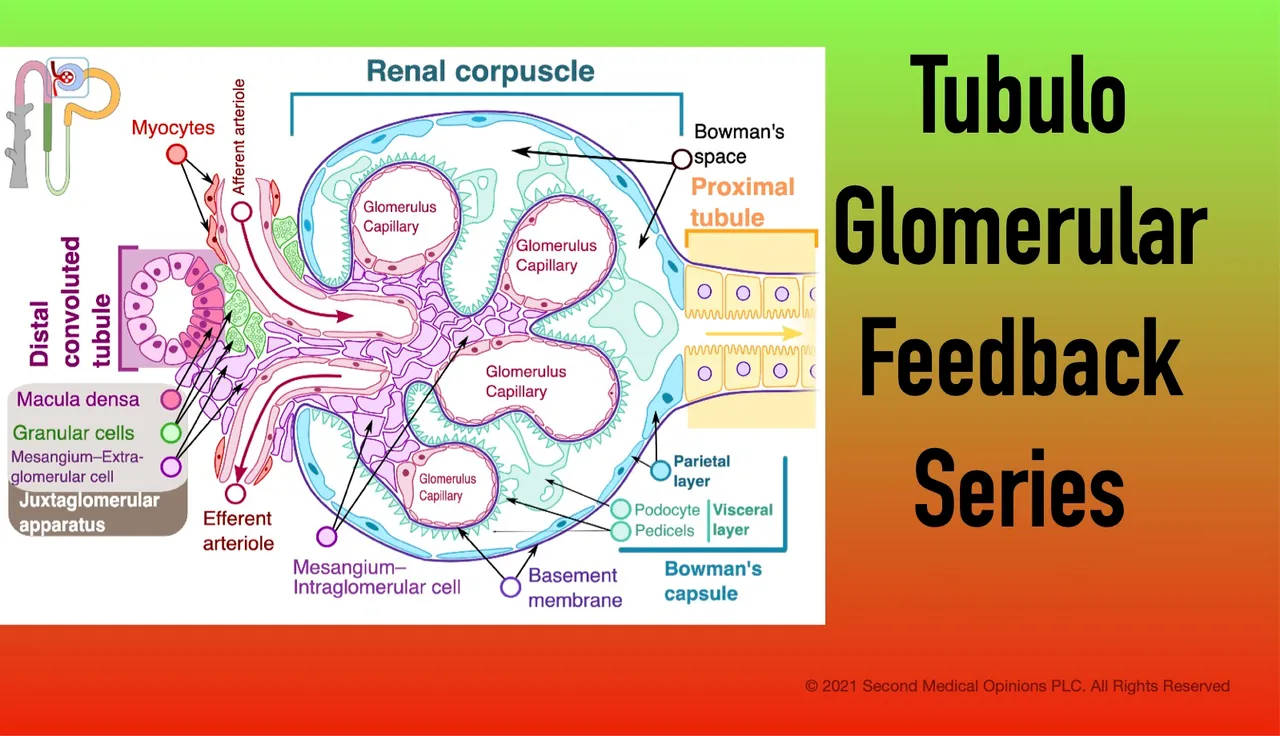
This article showed that the AT1 receptor mediates the production of nitric oxide at the level of the afferent arteriole.
This other article shows that angiotensin II, through the AT1 receptor in endothelial cells, activates endothelial nitric oxide synthase (eNOS).
These findings explain how the afferent arteriole's vasoconstriction by angiotensin II mediated AT1 R action can be attenuated by the generation of nitric oxide. This would leave the efferent arteriole as the predominantly affected by vasoconstriction from angiotensin II.
Credits
Renal Corpuscle Image. 2019. Downloaded under a Creative Commons Attribution-Share Alike 4.0 International License from Wikimedia Commons. Author: Shypoetess. No changes were made.
Posts in this series
The Macula Densa Cells May Sense Tubular Salt Content Using a NHE2 Exchanger
The Macula Densa Cells Also Can Sense Sodium and Chloride Concentrations Using the NKCC2 Transporter
MAP Kinases are Activated by Low Tubular NaCl and Stimulate COX-2 Expression
Inhibition of nNOS in the Macula Densa leads to an Exaggerated TGF Response
The Juxtaglomerular Granular Cells are More Numerous in the Afferent Arteriole